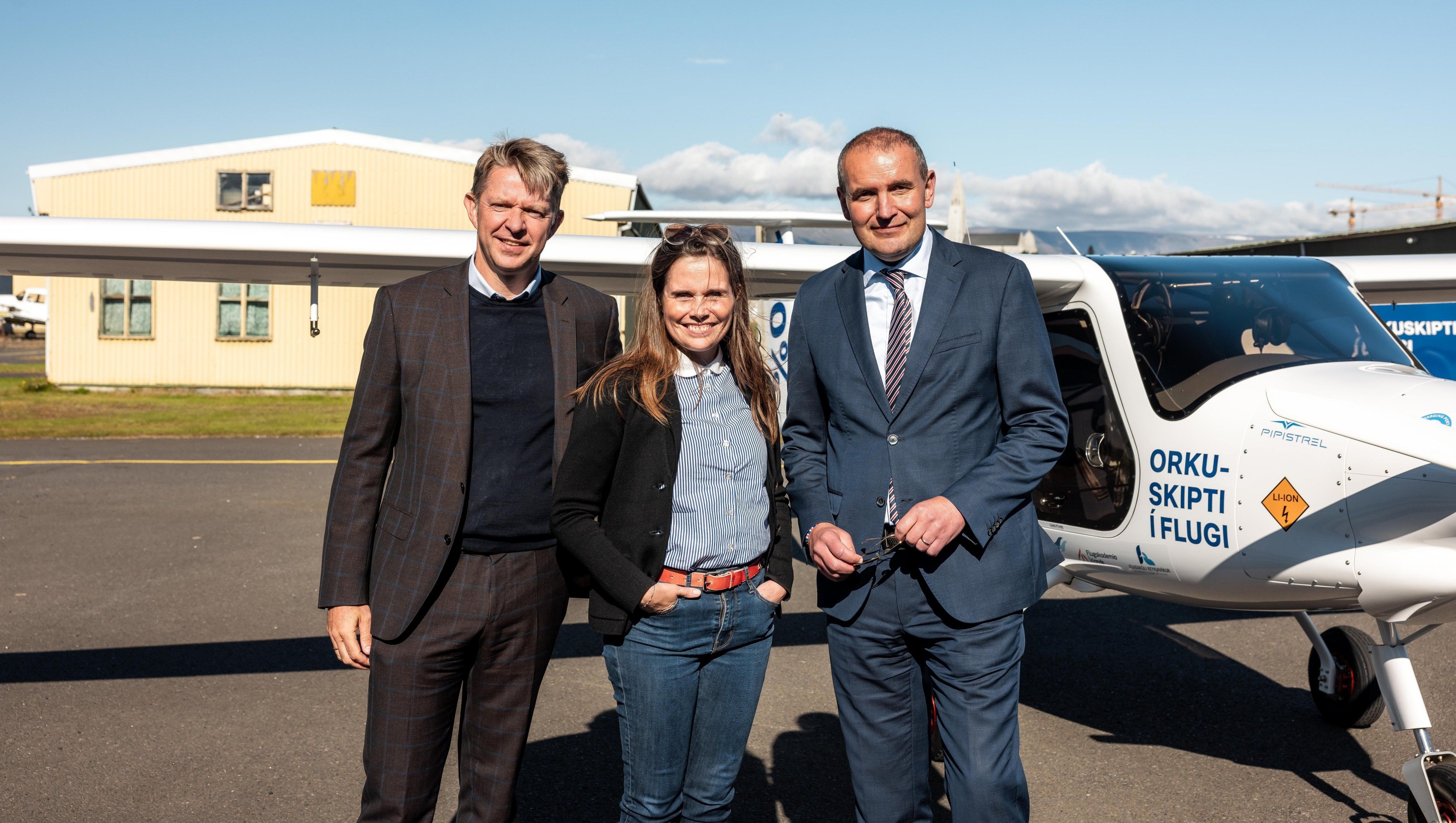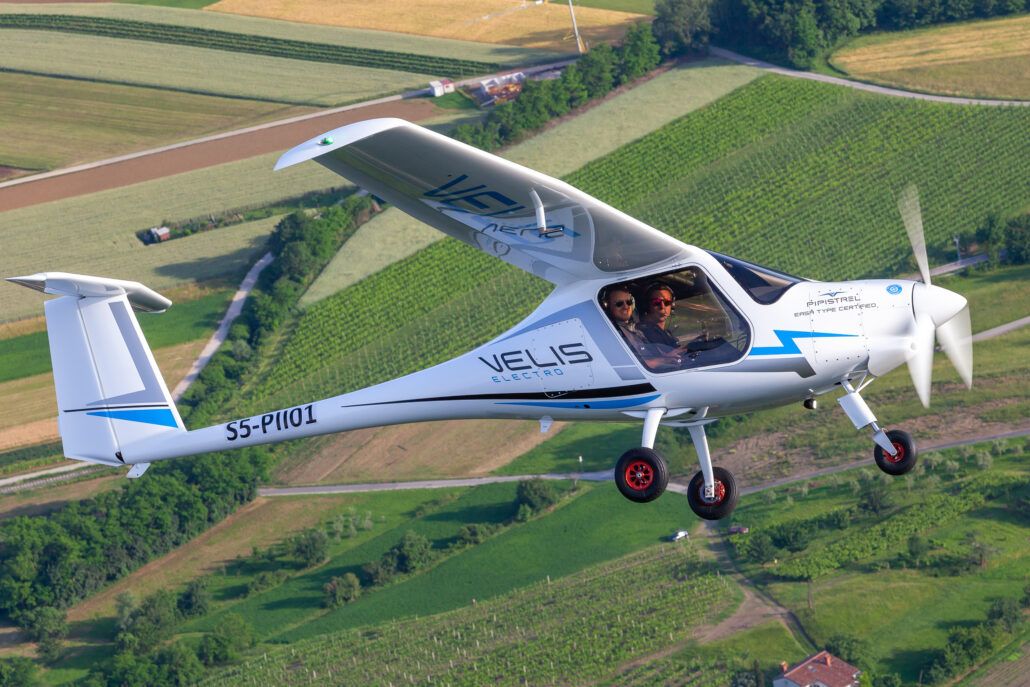Icelandair participated in a landmark event in Icelandic aviation last week when the company Rafmagnsflug ehf. operated the first commercial flight of an electric airplane in the country. During these flights, the President and the Prime Minister of Iceland were the first passengers.
The first electric flight in Iceland
Iceland’s first commercial electric flight took place last week. The company Rafmagnsflug ehf. (Electric Flight) brought the first electric plane to Iceland with the aim of taking the initiative towards the energy exchange of aviation, training staff in this new technology, and introducing it to the nation, explained Icelandair in a press release.
This electric airplane is a two-seater Pipistrel manufactured in Slovenia and a registration TF-KWH. According to the Icelandic Transport Authority, this aircraft was manufactured in 2021; it has a maximum weight of 600 kilograms and can only carry one passenger at a time. The electric plane is of similar size as the aircraft that flight academies use for flight training.
Icelandair said the commercial service last week represented the first step “in an important journey towards more environmentally friendly aviation. The opportunities for Iceland are great due to short domestic flight routes, access to green energy, and Iceland’s location between Europe and North America.”
The airplane will be used for flight training. Still, it is also expected that the public will be able to purchase sightseeing flights with this first electric plane in Iceland and experience traveling the skies on a Zero-Emission plane. Icelandair was only one of the many local companies involved in bringing the first electric flight to Iceland. The Icelandic airport administrator, Isavia, was also involved in the project.
Icelandair’s commitment to net zero emissions
Like many other airlines around the world, Icelandair has set new goals to reduce carbon emissions. The carrier made a commitment to reach net zero emissions by 2050. In addition, Icelandair set a medium-term target to reduce its carbon emissions by 50% per operational ton kilometer by 2030, compared to 2019 levels, improving its sustainability.
Reaching these goals will require a combination of measures, such as new aircraft technologies, continued operational improvements, the introduction of sustainable aviation fuels, as well as carbon offsetting. Introducing the Boeing 737 MAX aircraft into Icelandair’s fleet is an important contributor to reducing carbon emissions. Icelandair currently has 14 MAX aircraft (ten MAX 8s and four MAX 9s).
The Velis Electro
Pipistrel has developed the Velis Electro, the first electric-powered airplane to receive a Type Certificate. This is the model that was used on Iceland’s first electric flight. The aircraft is equipped with a 57.6kW liquid cooled electric engine, which provides power and produces no combustion gases. It has an endurance of up to 50 minutes and can reach a maximum horizontal speed at sea level of 98 KCAS (around 182 km/h). This endurance was designed to cover for typical flight school utilization for local flying. According to Pipistrel, it is a compromise between performance, environmental robustness, and battery system lifetime.
Would you be interested in flying onboard Rafmagnsflug’s first electric plane? Let us know in the comments below.


